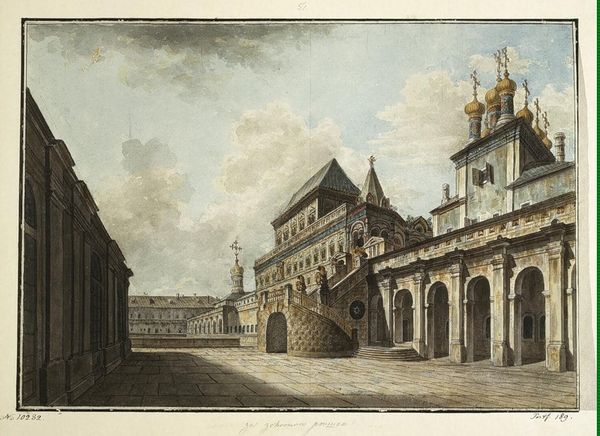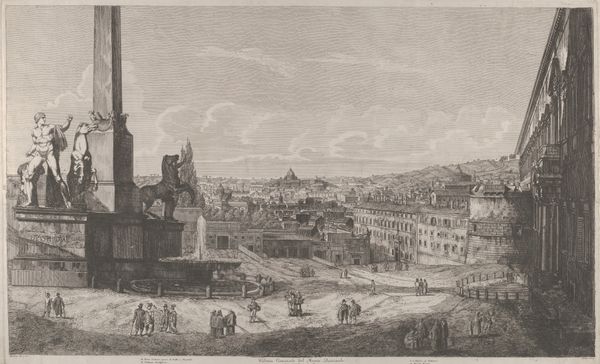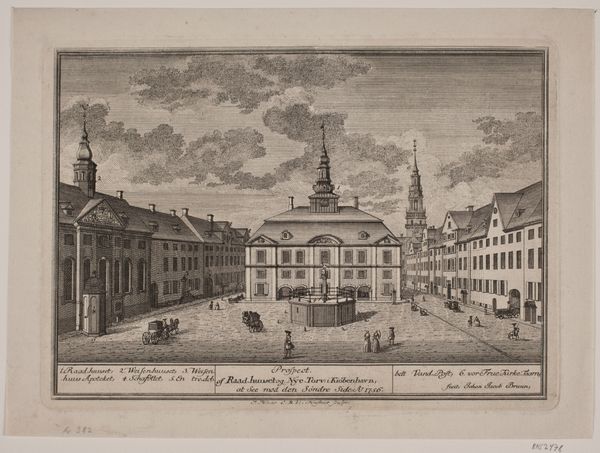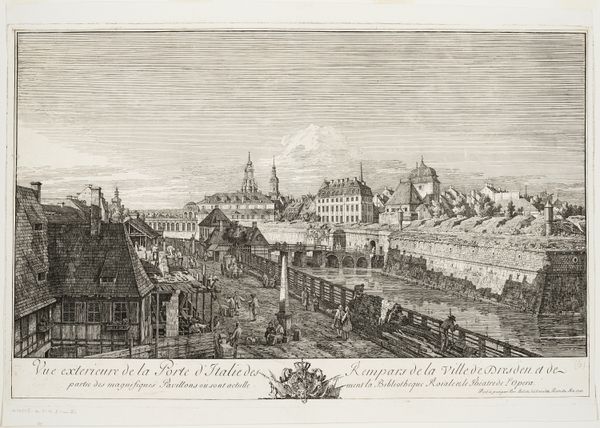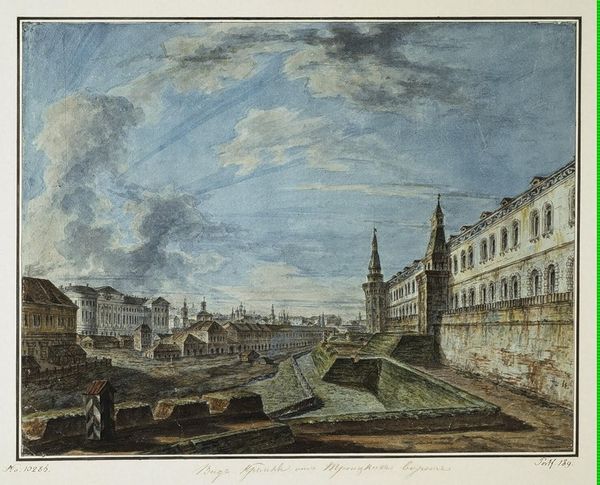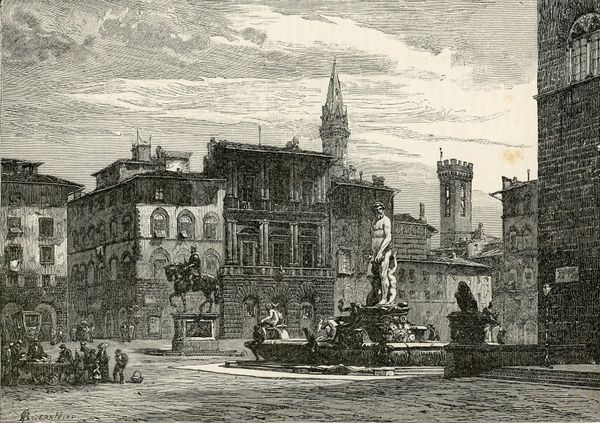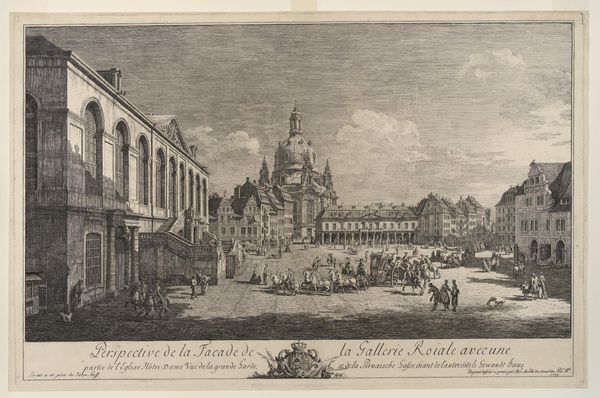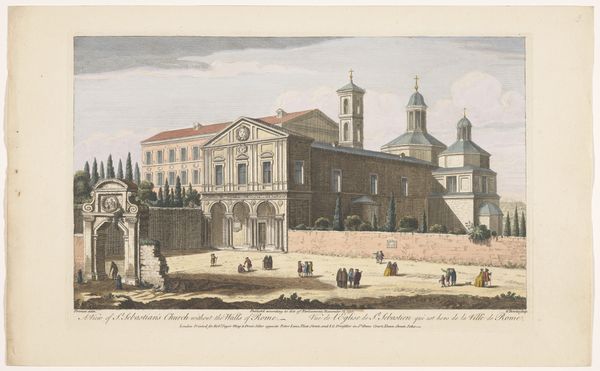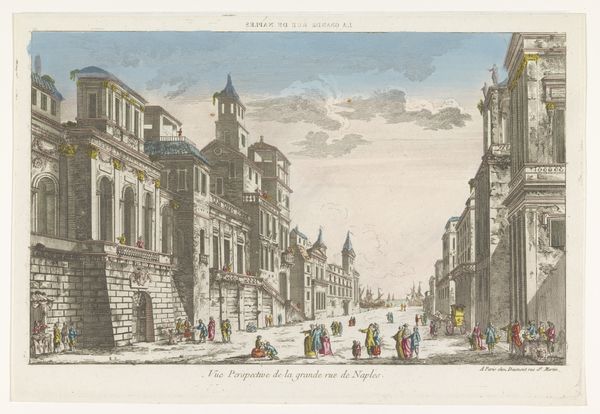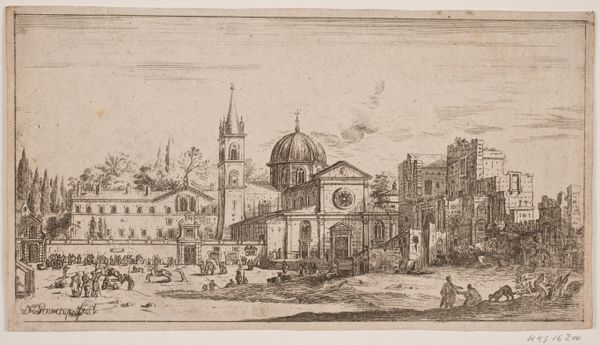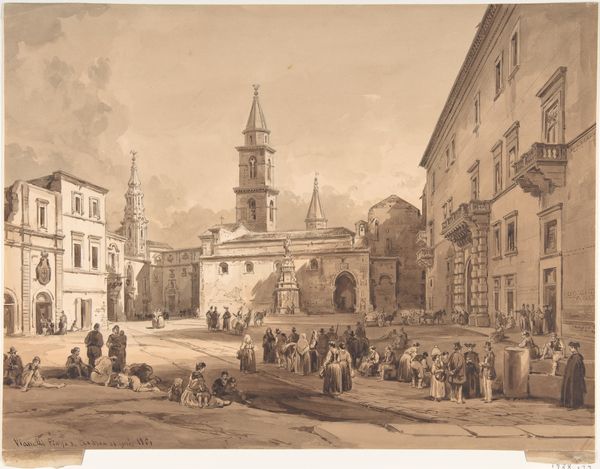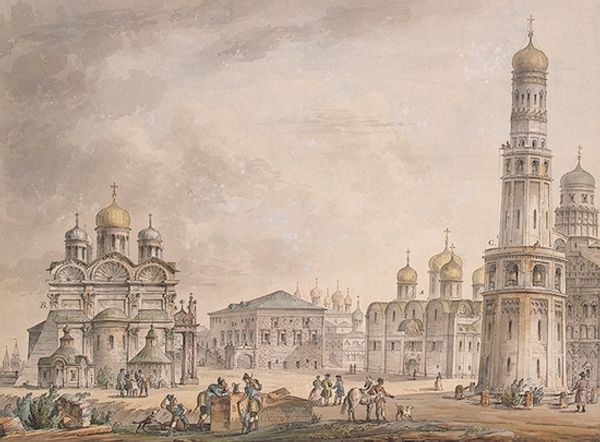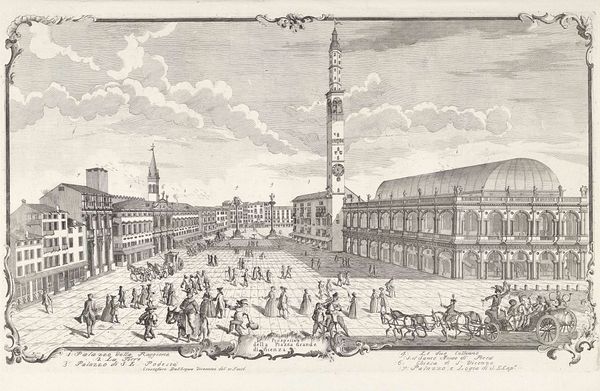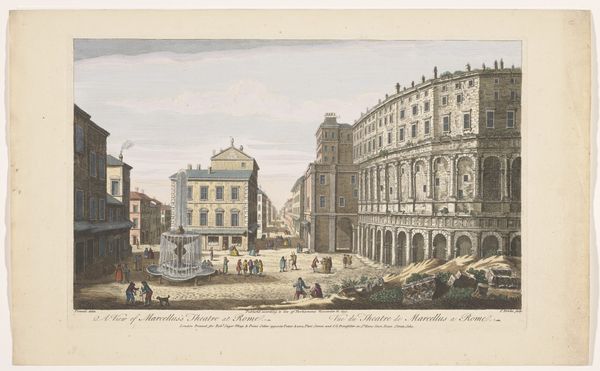
Copyright: Public domain
Editor: This is Fyodor Alekseyev's "Terem and Church of Our Savior in a pine forest in the Kremlin", a watercolor painting from 1805. I’m struck by how orderly and grand the architecture feels, yet also softened by the hazy atmosphere and delicate brushstrokes. How do you interpret this work within its historical context? Curator: Well, the orderliness you perceive is very intentional, echoing the Russian Empire's drive for modernization and Westernization under rulers like Catherine the Great and later, Alexander I. It presents the Kremlin not just as a historical fortress, but as a symbol of Imperial power made legible to European eyes. The choice of watercolor, though, does soften this effect, aligning with Romanticism's aesthetic preferences. How might this tension speak to the public's perception of their leadership at this time? Editor: So, the romantic style and the depiction of the Kremlin suggest a conversation between Russia's identity and Western influence? Is this painting also making a statement about the role of the Church? Curator: Precisely. The prominent Church of Our Savior signals the intertwined relationship between the state and religious institutions, solidifying the legitimacy and divine right of the Tsarist regime. Paintings like this, displayed in public exhibitions or reproduced as prints, helped shape public perception of national identity, empire, and faith. Consider the implied viewer, someone with enough cultural capital to understand architectural and artistic references. Do you see that as inclusive or exclusive? Editor: It feels like it's targeted towards the elite, reinforcing a sense of national pride and tradition, while subtly excluding the everyday person. The grand architecture seems to underscore that. Curator: An insightful observation. The work embodies how cultural institutions like art academies and the Imperial court collaborated to promote a specific vision of Russia, where power, religion, and art intertwined. It serves as an idealized, perhaps propagandistic, vision of national identity. Editor: It's fascinating to consider how something seemingly so straightforward can be so layered with political and social messaging. I’ll never look at landscape paintings the same way. Curator: Exactly! Remember, art is not just representation, it’s also a tool, deployed to serve particular interests.
Comments
No comments
Be the first to comment and join the conversation on the ultimate creative platform.
